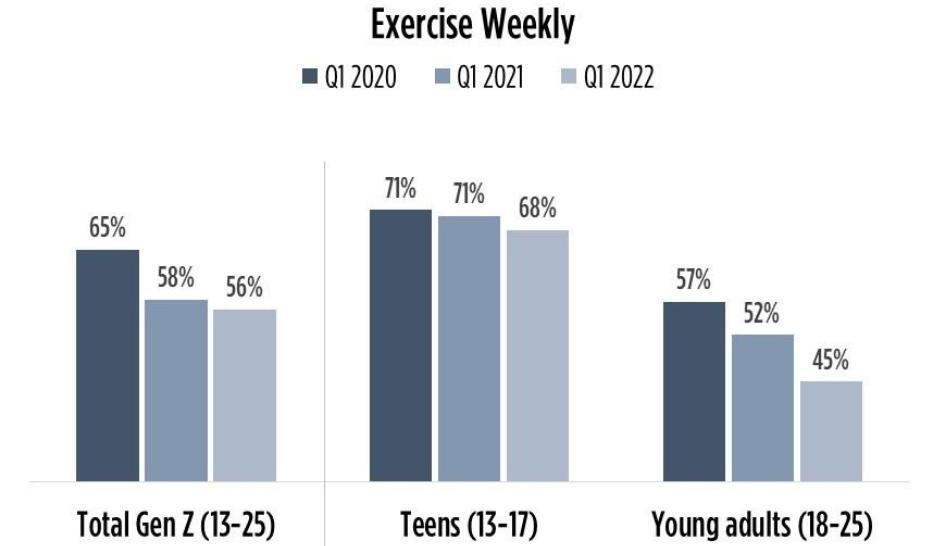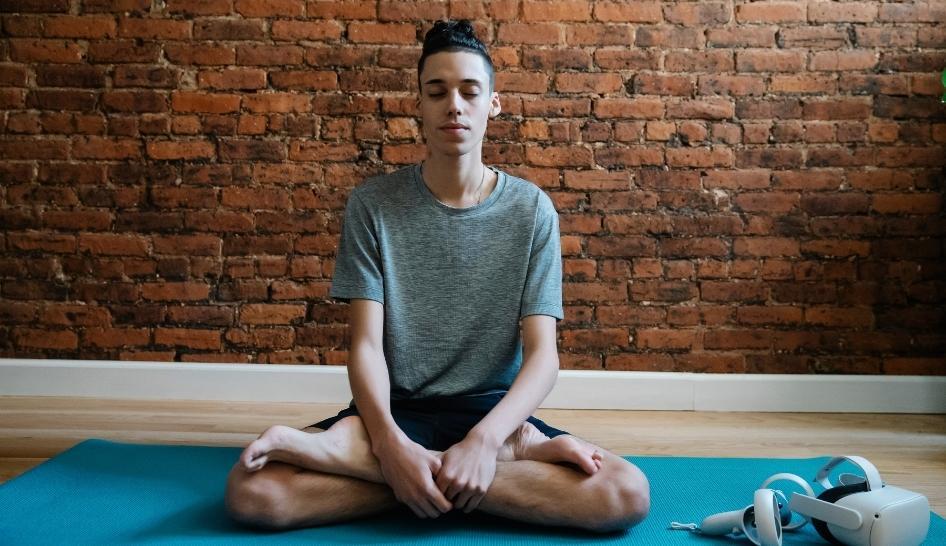The next generation of health, fitness, and wellness consumers is already here. Gen Z includes today’s tweens, teens, and young adults, with the oldest just getting into the swing of adult life at age 25. This age group is a large cohort, and they are diverse, highly educated, and highly connected.
Because so much of Gen Z’s lives already took place online, many assumed pandemic restrictions would be much less of a burden to them. Remote classes, online workouts, Zoom hangouts, group texts—Gen Z already had experience with these formats, so adapting to going virtual should have been much easier for them than for older generations.
We now know this hasn’t been the case at all. Instead of a seamless transition, Gen Z suffered in a unique way during the pandemic, with steep consequences to their physical and mental health. Adolescence and young adulthood are about finding your place beyond your family, and the pandemic held back a whole generation from this transition.
The lasting consequences of the pandemic on Gen Z should be of particular interest to the fitness industry because fitness is one area that has yet to recover fully.
The State of Our Health syndicated research program has been continuously collecting data on Americans’ fitness, food, and mindfulness approaches since 2018. In our topical report, Gen Z Post-Pandemic: Where Are They Now?, we checked in with teens and young adults to understand if and how well they’ve recovered. Let’s take a look.
Fitness is central to Gen Z’s overall approach to health.
While a high percentage of Gen Z participates in regular mindfulness practices, they are unique from other generations in how many focus on fitness to the exclusion of nutrition and mindfulness. This approach to health is typical of young people; with youth on their side, nutrition’s long-term benefits—and consequences—are less motivating than the tangible, shorter-term benefits of fitness.
Qualitatively, teens and young adults tell us that fitness is key to both physical and mental health. The importance is visible in the numbers, too. In addition to prioritizing athletic ability more than older generations, Gen Z is also more likely to use fitness to improve confidence and appearance, both key to self-esteem for this outwardly-focused life stage.
Fewer Gen Z’s are exercising weekly than pre-pandemic.
In Q1 2020, 65% of Gen Z reported exercising at least weekly. Exercise decreased to 58% in Q1 2021 and even further to 56% in Q1 2022. This decline is driven almost entirely by young adults dropping their exercise habits. In Q1 2022, only 45% of young adults exercised weekly, the lowest point since the inception of State of Our Health in 2018.


